MYC Controls the Epstein-Barr Virus Lytic Switch
- PMID: 32315601
- PMCID: PMC7245572
- DOI: 10.1016/j.molcel.2020.03.025
MYC Controls the Epstein-Barr Virus Lytic Switch
Abstract
Epstein-Barr virus (EBV) is associated with multiple human malignancies. To evade immune detection, EBV switches between latent and lytic programs. How viral latency is maintained in tumors or in memory B cells, the reservoir for lifelong EBV infection, remains incompletely understood. To gain insights, we performed a human genome-wide CRISPR/Cas9 screen in Burkitt lymphoma B cells. Our analyses identified a network of host factors that repress lytic reactivation, centered on the transcription factor MYC, including cohesins, FACT, STAGA, and Mediator. Depletion of MYC or factors important for MYC expression reactivated the lytic cycle, including in Burkitt xenografts. MYC bound the EBV genome origin of lytic replication and suppressed its looping to the lytic cycle initiator BZLF1 promoter. Notably, MYC abundance decreases with plasma cell differentiation, a key lytic reactivation trigger. Our results suggest that EBV senses MYC abundance as a readout of B cell state and highlights Burkitt latency reversal therapeutic targets.
Keywords: DNA looping; MYC; herpesvirus; latency reversal; lytic reactivation; tumor virus.
Copyright © 2020 Elsevier Inc. All rights reserved.
Conflict of interest statement
Declaration of Interests L.G.-R. is a consultant for Janssen, ADC Therapeutics. C.J.F. and F.C. are the employees of Cell Signaling Technologies.
Figures
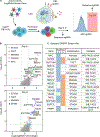
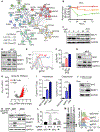


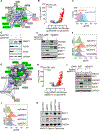
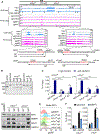
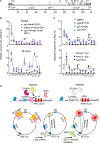
References
-
- Babcock GJ, Hochberg D, and Thorley-Lawson DA (2000). The Expression Pattern of Epstein-Barr Virus Latent Genes In Vivo Is Dependent upon the Differentiation Stage of the Infected B Cell. Immunity 13, 497–506. - PubMed
-
- Belotserkovskaya R, Oh S, Bondarenko VA, Orphanides G, Studitsky VM, and Reinberg D (2003). FACT facilitates transcription-dependent nucleosome alteration. Science (New York, NY) 301, 1090–1093. - PubMed
Publication types
MeSH terms
Substances
Grants and funding
LinkOut - more resources
Full Text Sources
Other Literature Sources
Molecular Biology Databases

